Ultrasound in MSK
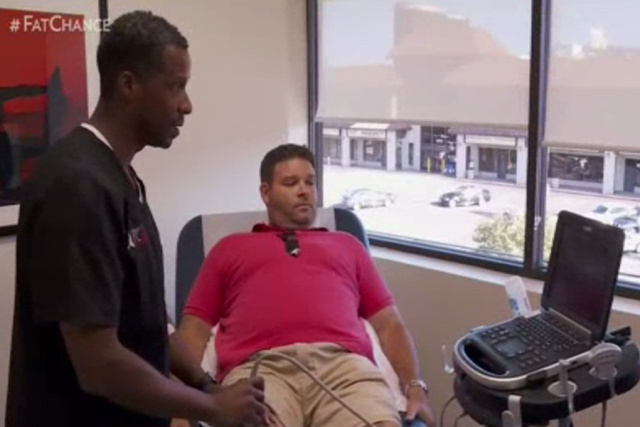
Sonosite was recently graced with visiting doctors from around the country, one of which was Dr Byron Patterson who is a partner in Primary Care Sports Medicine in Tarzana California. He made a wonderful presentation to more than 160 employees about ultrasound applications in sports medicine. …
Rotterdam, Netherlands ambulance paramedics trained to diagnose AAA condition in transport
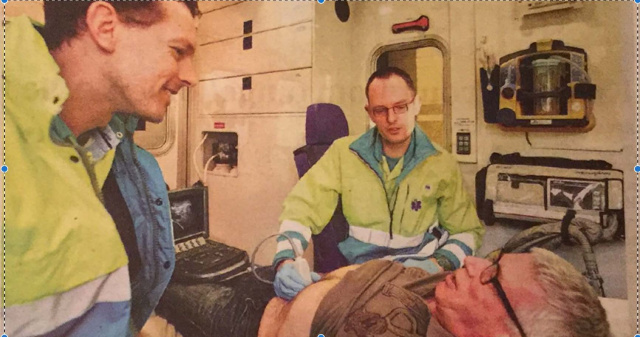
Amsterdam, 19th of January 2016.
[This is translated to English from the Netherland’s news paper]
The ambulances in Rotterdam Netherlands during the coming 5 months are equipped with ultrasound imaging that could be life saving with people with an AAA. …
HIMSS15 Marks Major Changes in Health IT
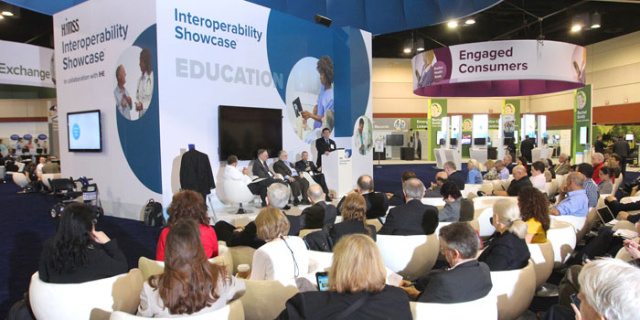
The trend towards interoperability is palpable and what better way to underscore this positive movement than HIMSS 2015 conference which broke all time attendance records. FUJIFILM Sonosite is at the forefront of clinical workflow optimization and health IT interoperability. The need to connect modalities, especially Ultrasound, to EMRs and other Health IT systems is significant and FFSS is taking concrete steps to achieve this important goal. As evidenced by this direct quote, alignment amongst key industry stakeholders is the first step towards effective interoperability. …
How Technology is Shaping Medicine
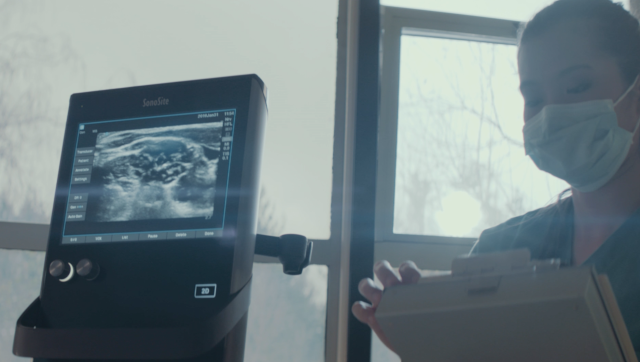
UC Irvine doctors share how technology is shaping medicine, from phone apps to brain surgery;
Taken from the Orange County Register. Full article available at http://www.ocregister.com/articles/ultrasound-663156-technology-medical.html …
Glimpse Episode 3: Liz Turner's Interview
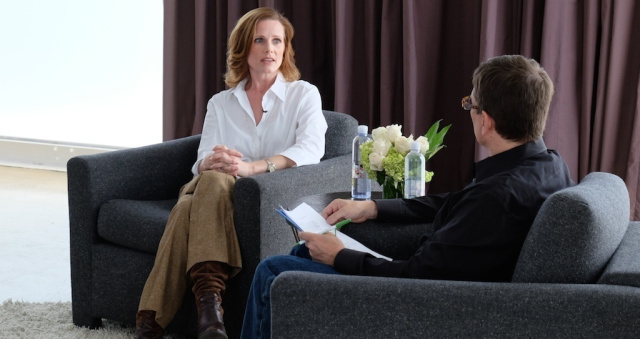
Dr. Liz Turner, Director of Bedside Ultrasound for the Dept. of Medicine at UCLA, puts bedside ultrasound under the microscope. …
Glimpse Episode 4: Dr. Francis Yamazaki, Discusses Anesthesia

Dr. Francis Yamazaki is a 30 year veteran in Anesthesiology. He is an Anesthesiologist with a cutting edge sports medicine group at Kerlan Jobe Surgery Center, LA. In this interview, he discusses the expectations of patients in the elite world of sports and the progression of anesthesia, particularly in the realm of nerve blocks. In particular how the progress of technology has improved safety for both patients and surgeons.
…
Banner Health Case Study
Over the span of 13 years, BannerHealth has incrementally adopted PoCUS (Point-of-care ultrasonography) across the health system through organic growth, unintended disruption and intended disruption. …
Dr. Bryan Matusic Study - Why be satisfied with any failed blocks when you can avoid them altogether?
Why be satisfied with any failed blocks when you can avoid them altogether?
Dr. Bryan Matusic, DO, Director of Anesthesiology for Advanced Surgical Hospital, Washington, PA …
Code Black Movie - View Local Showings!
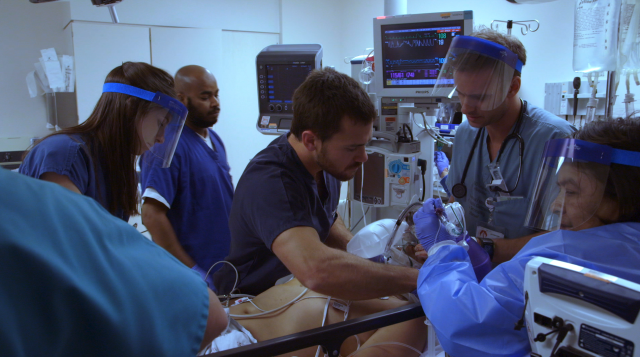
Welcome to the Code Black Movie Page!
We are all so thrilled to announce that new dates for CODE BLACK have been added across the country! Check out the schedule below to see when CODE BLACK will reach your town. …
Ultrasound First -- Musculoskeletal Imaging (MSK)
Clinical evidence and research supports using ultrasound as the first diagnostic test for numerous musculoskeletal (MSK) conditions. Diagnostic ultrasound offers a number of important advantages compared to computed tomography (CT) and magnetic resonance imaging (MRI), in terms of safety and effectiveness. Diagnostic ultrasound is noninvasive and offers real-time imaging, allowing for examinations of structures at rest and in motion. …
Ultrasound First -- Renal Colic Detection
Renal colic affects nearly 1.2 million people each year and accounts for approximately 1 percent of hospital admissions.1 Diagnosing kidney stones in patients who present with renal colic is often performed with computed tomography (CT) and, less commonly, with intravenous urography (IVU).2 While CT and IVU are accurate diagnostic tests and define clearly the size, shape, and position of uric acid stones, they also present a number of factors that would discourage use,3 including the potential risks of exposing patients to repeated doses of ionizing radiation. …
What if we could decrease the need for CVC placements in the ER?
"This data is pivotal for emergency medicine and the overall impact it can have on patient safety
and cost reductions in the hospital."
— Bon Ku, MD, MPP, Philadelphia, Pennsylvania
Study finds that ultrasound-guided peripheral IV’s are a viable alternative to high-risk CVCs in 85% of Patients
More than five million central venous catheter (CVC) lines are placed in U.S. hospitals each year, making it one of the most common invasive emergency room procedures.1 CVC placement involves the insertion of a large catheter into a patient’s major vessel. …
Behind the Scenes of Reconnection - companion film to Code Black Movie
Watch the Video!
Behind the Scenes of the Film
Take a look behind the scenes of this new video...
Recently the Code Black film crew was back at LA County Hospital to create a promotion for the film, entitled "Reconnection". …
What if you could place central lines in the first try?
In his own words: Hear one physician share his AxoTrack experience.
I feel confidence in knowing where the tip of that needle is and I think that is a big deal. AxoTrack clearly contributes to the accuracy of the procedure; I think that’s what it brings to the game.
--Mark P. Mercier, MD, Attending Physician, Emergency Medicine, Beaufort Memorial Hospital …
White Memorial Medical Center Utilizes Sonosite's Central Line Management Program
Striving for Excellence at White Memorial Medical Center
White Memorial Medical Center, a member of the Adventist Health System and a 353-bed hospital in downtown Los Angeles, was concerned about its rates of iatrogenic pneumothoraces (IP) and central line-associated bloodstream infections (CLABSI) and set out to improve the situation. …
What if you could eliminate iatrogenic pneumothorax?
Michael Shabot, MD, of Memorial Hermann Healthcare System, discusses iatrogenic pneumothorax and central line placement safety. …
What if you could detect and prevent diseases before they showed symptoms?
Bridging the Gap to Create Continuity of Care
Life Line Screening is known throughout the nation as the leading provider of community-based preventive health screening services. The company brings affordable screenings to the public through partnerships with leading hospitals, civic organizations, and other groups committed to quality health care – like Sonosite. Sharing a vision to make disease identification and prevention accessible to all, Sonosite and Life Line Screening collaborate to promote widespread participation in early screenings. …
Sonosite interviews Dr. David Williams for the Code Black Movie release
Meet Dr. David Williams from Code Black Movie
Dr. David Williams is an assistant professor of clinical emergency medicine at LA County USC Medical Center. He works within the Division of International and Wilderness Emergency Medicine and has been practicing at LA County USC since 2003.
"LA County on its own represents one of our nation's big county hospitals... taking care of the poorest of the poor patients in our country, and the majority of them being the working poor."
Dr. …
Sonosite Interviews Dr. Andrew Eads for Code Black Movie release
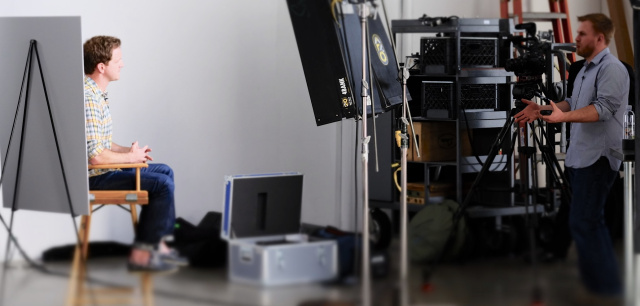
Meet Dr. Andrew Eads from Code Black Movie …
Sonosite Goes to Brazil!
Sonosite’s International Symposium on Point-of-Care Ultrasound in Brazil was a huge success -- two of the biggest events in Sonosite history!
There were over 450 total registrants for both Sāo Paulo and Rio De Janeiro. 150 for São Paulo and 300 attendees for Rio De Janeiro’s symposium. The 2nd half of the symposium consisted of three educational workshops that the participants could choose from.
Topics for each workshop varied due to the attendee list and venue size for each workshop. …
